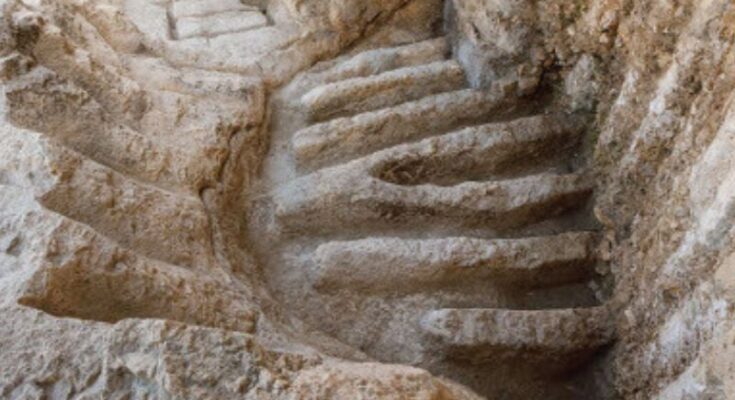Researchers solved a 150-year-old mystery in the City of David when they found a huge moat that helped protect the Temple Mount and the king’s palace in ancient Jerusalem.
This news was announced by the Israel Antiquities Authority and Tel Aviv University on Sunday.
For a long time, experts couldn’t find the full path of the city’s northern wall. However, recent digs at the Givati Parking Lot near the Old City walls uncovered the moat. This moat divided the City of David, keeping the palace and Temple Mount separate from the rest of the city.
The Israel Antiquities Authority announced that the moat was at least nine meters deep and 30 meters wide. They described it as “one of the monumental fortifications that protected the kings of Jerusalem.”
Moat might have been cut 3,000 years ago
Excavation directors, Professor Yuval Gadot and Dr. Yiftah Shalev, said they do not know when the moat was initially constructed. However, they found evidence that it was used when Jerusalem was the capital of the Kingdom of Judah, nearly 3,000 years ago, starting with King Josiah.
During that time, the moat separated the southern part of the city, where people lived, from the northern part, which housed the palace and temple.
The researchers noted that building the moat changed Jerusalem’s natural landscape and required advanced engineering skills as well as many resources.
The Israel Antiquities Authority stated in a press release that creating the moat was a large-scale, monumental task. It was designed to alter the natural topography and show the power of Jerusalem’s rulers to anyone entering its gates.
Findings of British archaeologist Kathleen Kenyon
Following this significant discovery, researchers revisited old excavation reports by British archaeologist Kathleen Kenyon. Kenyon conducted digs in the City of David during the 1960s in an area just east of the current Givati Parking Lot, according to Gadot.
Gadot explained that Kathleen Kenyon observed the natural rock sloping northward where it should have risen. She believed it was a natural valley, but now it is clear she had found part of the moat, carved to the west. Connecting the two uncovered sections reveals a deep and wide moat extending at least 70 meters from west to east.
He added that the discovery matches descriptions in the Bible about the area’s topography. One such reference is in the first Book of Kings (11:27), where it mentions King Solomon building a structure called the “Millo.” The passage reads, “… Solomon built up the ‘Millo’ and closed up the breach in the wall of the City of David his father.”



